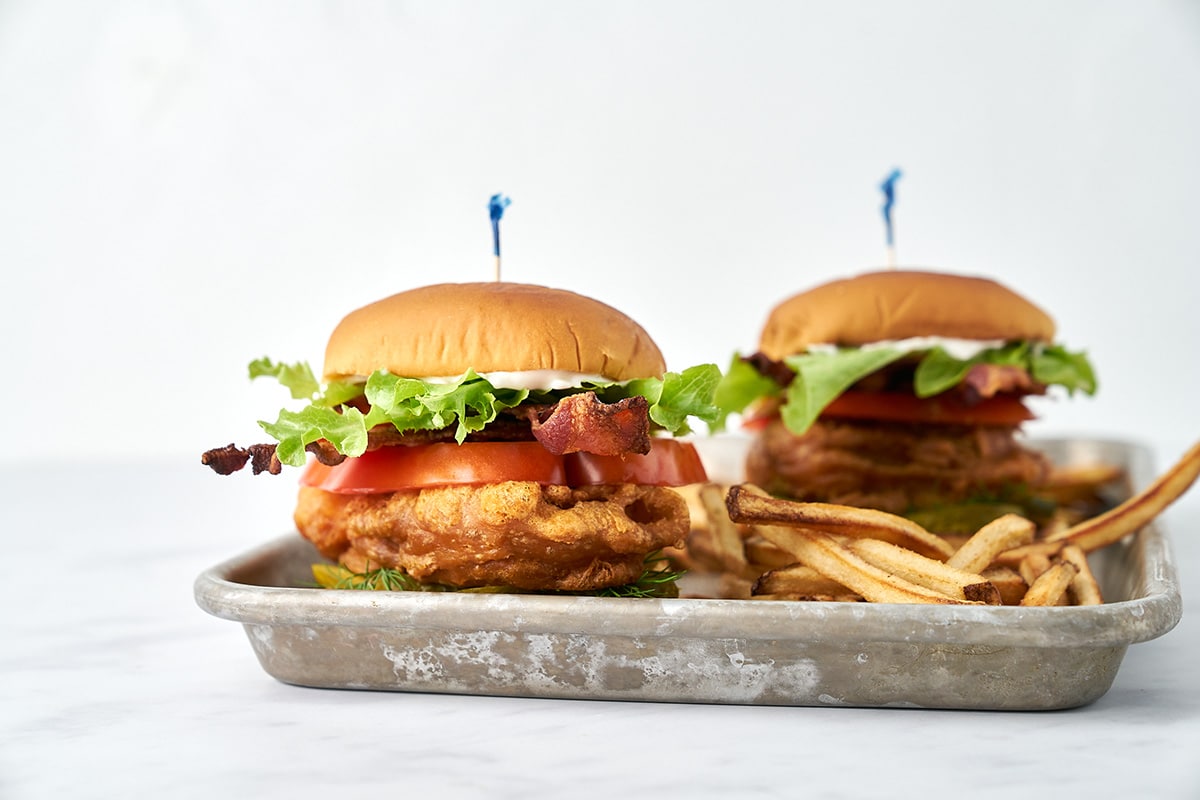Chefs are being pulled in more directions than ever before, with the labor shortage, as well as supply chain inflation, dragging on into 2022. Meanwhile, consumers are still looking for an exceptional eating experience every time they dine out, with an emphasis on healthy items that might boost immunity. Datassential reports that 70 percent of consumers say certain foods and ingredients can help boost immunity against COVID-19 and other viruses, which might explain the demand for such items.
The challenge for chefs then becomes threading the needle—how can they work within the confines of having limited help in the kitchen, with a finite amount of reliable ingredients, and still create something healthy and memorable for guests?
“The labor shortage is definitely the talk of the town right now in foodservice,” says Leah Krafft of Alaska Seafood Marketing Institute, a public-private partnership between the State of Alaska and the Alaska seafood industry. “What goes with that is menus that are shrinking, restaurants having fewer pantry ingredients on hand, and chefs needing ingredients that go further and help them do more with less. Something like breading and battering proteins by hand is an example of something they don’t want to have to focus on.”
Barton Seaver, an author and chef who has dedicated his career to sustainable seafood, points to seafood as a great way to meet the moment. Specifically, Seaver endorses battered and breaded Alaska seafood, which has vaulted into the mainstream thanks to advances in technology. It’s now easier than ever before for chefs to get the product in and use it in a host of applications across segments while reducing operational complexities.
Many Alaska seafood companies offer battered and breaded fish as a single, frozen SKU for chefs and operators. Chefs no longer bristle at the idea of frozen seafood, Seaver says, as it’s no longer deemed inferior.
“To be perfectly honest, when I started as a chef, I learned that frozen seafood was inferior,” Seaver says. “I think many chefs have. But there are so many reasons why that has changed. Fresh-frozen seafood—when seafood is frozen at peak freshness—is a complete game changer in that it helps chefs get product year-round, and it reduces carbon emissions because it reduces the amount of deliveries that have to be made. You now have fresh quality with all of the upside of a longer shelf life.”
Breaded and battered seafood can be used in a long list of familiar applications, like tacos, bowls, sandwiches and salads. It can also be dressed up into something playful and decadent like the Fish Stick Panzanella that Seaver recently put in a cookbook. Consumers will love these applications centered around battered and breaded seafood, Krafft says, because the focal point perfectly straddles the line between health and comfort.
“Consumers say fish is the number one protein to boost immunity—if that’s not a good selling point to put on your menu, then I’m not sure what is,” Krafft says. “And it’s still craveable—you get that health halo with the Omega-3s, but it’s still something with crunch that diners love.”
Many diners opt for seafood when looking to change their diet, whether the desire for change is due to a New Year’s resolution, or if it’s Lent-related. In fact, according to Datassential, of diners seeking to reduce meat consumption, 58 percent reported wanting to increase their seafood intake. Datassential also reports that 29 percent of consumers view fish as an ingredient that boosts immunity and decreases recovery time should they get sick—in this case, fish beat out other healthy foods such as avocado, eggs, and various vegetables.
And when properly sourced, seafood helps communicate a story to diners. It’s why Seaver is partial to Alaska seafood, which Datassential identified as the number one protein brand on menus today, meaning name-checking Alaska seafood on menus goes a long way.
“When it comes to what people want, both in the contemporary lens of the pandemic, but also where trends have been going for a while—toward healthy, creative dishes that tell a story of ingredients and provenance—breaded and battered Alaska seafood just fits so nicely into that discussion,” Seaver says. “And now, in the midst of a labor and supply chain crisis, modern technology has literally made this a convenience menu item that’s easy on your kitchen. I mean, really, wow. That’s beginning to ride a lot of compelling momentum and it seems to call for more seafood on the menu more often.
For more on menuing Alaska seafood, visit the Alaska Seafood Marketing Institute’s website.
By Charlie Pogacar













